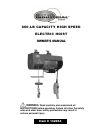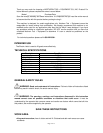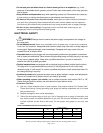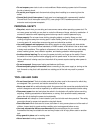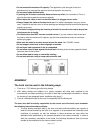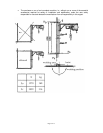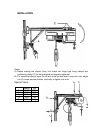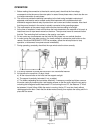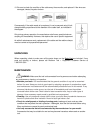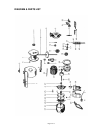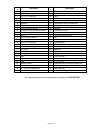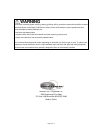
Page of 13
5
• Do not exceed the maximum lift capacity. The application, size and type of load, the
attachments to be used and the period of use must be taken into account
.
• Do not stand under hoisted loads.
• If pushing the lift button continually does not have any affect, do not continue. This is a
sign that the load exceeds the maximum capacity.
• Never adjust the cable or work on the Hoist when it is plugged into an outlet.
• Always inspect the cable and hook prior to use. If he cable is damaged in any way, do not
use it. Hooks that are bent, worn or whose openings are enlarged beyond normal throat opening
should not be used.
• If the Hoist is stopped during the lowering of a load it is normal for the load to drop a few
inches more due to inertia.
• The Hoist motor does NOT have an overload cut-out. If you are unable to hoist a load and
the load is under the maximum lift capacity, stop the Hoist and allow the motor to cool down
before trying again.
• Make sure the cable is correctly wound around the wheel. See FIGURE 1 below.
• Do not support a load over or around people or animals.
• Do not leave load suspended in the air unattended.
• Do not allow a load to bear against the hook latch. Allowing a load to bear against the hook
latch can result in loss of load.
• Do not allow load to swing or twist while hoisting.
• Do not use cable as a sling or wrap cable around a load.
ASSEMBLY
The hoist can be used in the following ways:
1. Fixed on a 1-7/8" (48mm) pipe with fixing clamps
2. With sliding wheels and installed on a gantry complete with slide track supplied by the
manufacturer and fitted according to the user’s need with counterweight containers or clamps
for anchoring ( see paragraph below “installation with gantry”)
3. Fixed to a framework made by the user in compatibility with the sliding unit
The user, who shall be entirely responsible for the correct use of the hoist, must remember
the following instructions and provisions:
• The load bearing structures built by the user must have sufficient stability and capacity to
resist the forces exerted by the hoist or its supports in a accordance with dimensions and
conditions of constraint, so that the stresses in these structures are kept within the
allowable limits established by the relevant standard for the various materials. In order to
allow the necessary calculations to be made, the following illustrations show the forces
exerted at the constraints for the various cases involved.



